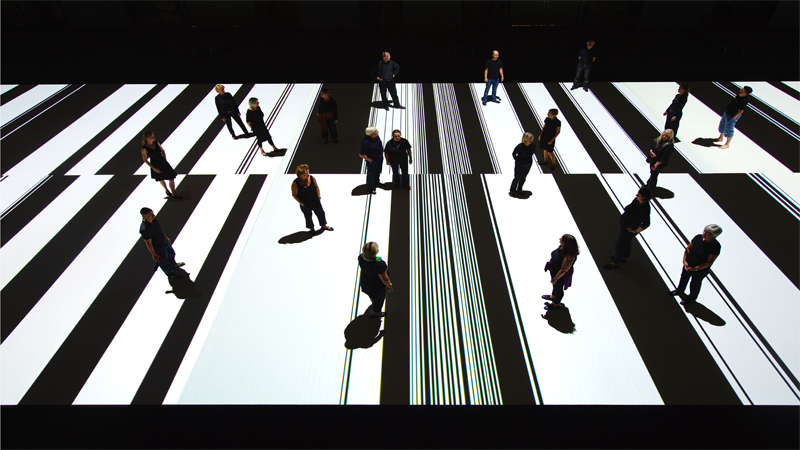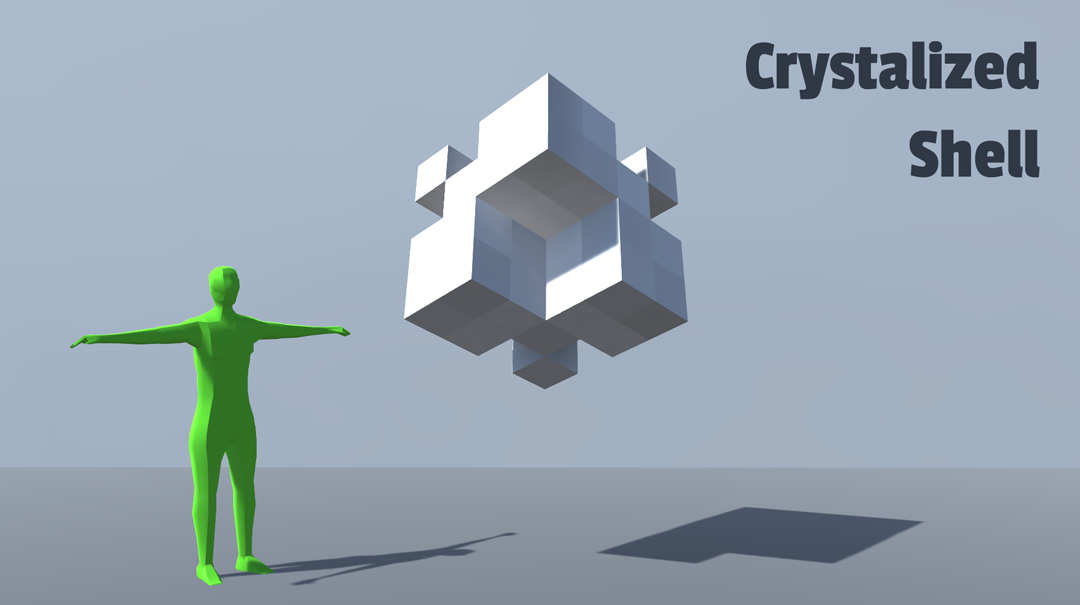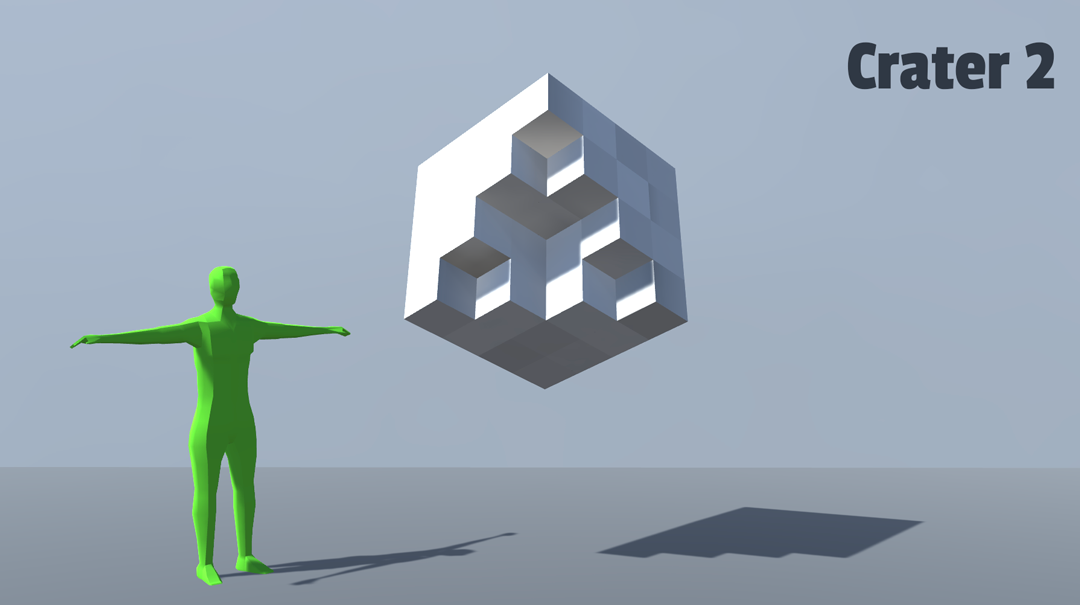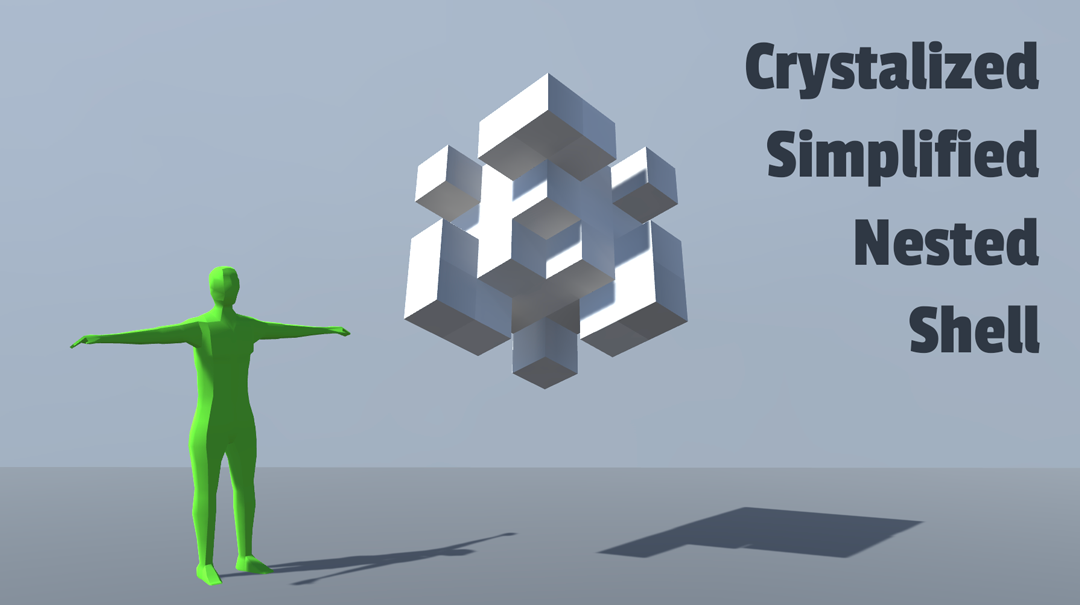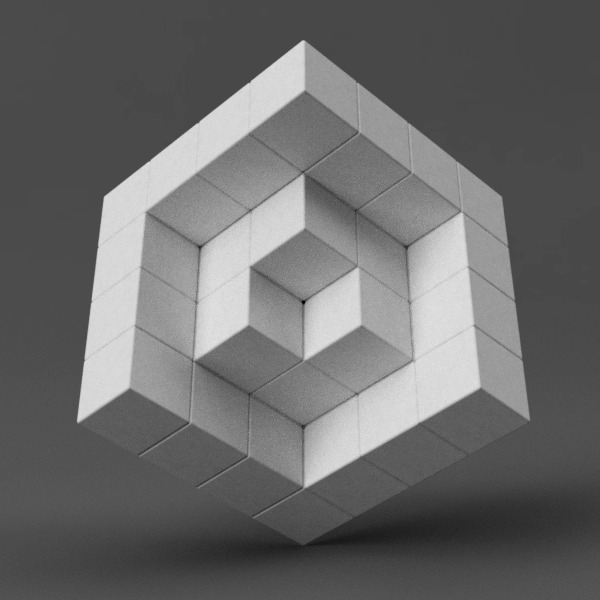Repetition²
Repetition² utilises squares in repeated arrangements to create satisfyingly complex sequences.
produced by: Hannah Corrie
Introduction
Working towards the notion of constructing a strict visual language, I resolved to use only squares and quadrilateral shapes throughout the entirety of my project. I also chose to work entirely in black and white as I wanted to challenge myself to focus specifically on motion and contrast. These decisions provided me with a clear framework to work within.
Concept and background research
The result of this projection mapping project was directly informed by the shape on which we were projecting and therefore, exploration into the creation of the shape is required. The initial starting point for the creation of the cube was influenced by a piece entitled, Date Gate by the creative agency, Ouchhh. Data Gate, is an imposing 15 ton, 360 LED cuboid structure. Machine learning techniques were employed to investigate astronomical research data, the results of which informed monochromatic visuals through the dimming and lightening of flux.
An interesting aspect of Data Gate is the transformational shift between establishing the cube as a whole, and in contrast, to treating the shape as a collection of smaller components. In addition to the visual style used, the commanding angle of the cube is also striking. This became an important aspect of the shape my group went on to design.
Further inspiration for this project derived from the immersive audio-visual work of Japanese artist Ryoji Ikeda; specifically from his work Test Pattern [N°12] that I experienced in October of 2017 at Store Studios, 180 The Strand. Driving Ikeda’s monochromatic A/V work is the use of the essential characteristics of sounds. The rawness of this approach results in an equally mathematically precise visual language. The shapes and forms used, often quadrilaterals, are simplistic whilst the results remain conglomerate.
I aimed to represent aspects of both Ryoji Ikeda and Ouchhh’s work when approaching my design.
Technical
The Shape
Using the 3D computer graphics application Autodesk Maya, my group created over a dozen iterations of a shape. Nested Shell was chosen as the final shape.
Projection
Repetition² was created using C++/OpenFrameworks aided by the piMapper addon. I initially began experimenting in Processing after reading a blog by Zach Lieberman, in which he discussed the potential of using Processing as a kind of visual diary. I liked this as a starting point for my project due to the speed at which it was possible to test ideas. Following this, I moved into the OpenFrameworks environment. Very early on in the creation process I uploaded my new dummy object into piMapper and would test my ideas on the form to determine if further exploration was necessary.
Through this process, I created several sketches that I tested and put aside as they I felt they were not appropriate for the shape. I ended up with 6 FBO sources including a basic outline FBO and a purely black FBO. The other FBO's can be seen below.
In 'Rotating Squares', a grid of squares rotate independently in sequence on their x,y,z axis creating the illusion of a moving bar. 'Squares in Repetition' creates interesting patterns through small and constant varying parameters. The changes occur in the size and location as well as a boolean switch from black to white after each cycle. Next, I wanted to add an element of noise into my project. 'Quadrilateral Noise' was the result. At quick glance, the squares may seem random, but watch for a few seconds and you will see a ripple moving through the shapes. Finally, in 'Scanning Lines' I made use of the cos and sin functions in order to create sweeping lines of black and white squares.
Through experimentation, my vision for the project became clearer. I was attempting to depict a kind of battle between chaos and order. In Play Matters, a similar battle is alluded to in the context of play, 'Play is a movement between order and chaos. Like tragedy, it fulfills its expressive purpose when it manages a fagile, oscillating balance between both'(Sicart, 2014). I tried to demonstrate this curruption of order through the use of 'Quadirateral Noise' as well as using a huge number of presets to try and create a fast paced, perpetual sequence.
Future development
If I were to continue with this project, fixing the timings of the FBO changes would be the area I would want to improve the most. Additionally, I would have liked to have spent more time fine tuning the actually mapping onto the physical shapes to tighten up the edges of each face in my mapping.
Self evaluation
Overall, I am quite content with the results of the Repetition² project. It provided me with the perfect framework to experiment with my new skills and I think the outcome is close to what I set out to achieve. I am also very happy with the Nested Shell structure and whilst I realise it was not necessary to create such an object for this project I do believe that it created an additional element of repute. That being said, small aspects of the final project need fixing. As previously mentioned, the mapping in the GetLerped Pop Up exhibition was not as tight as I had intended and with more time this issue could have been fixed. As well as this, a few of the transitions could have been slightly better, resulting in a smoother movement between phrases. I am pleased that I decided to work only in black and white as I think my understanding of colour theory is not yet at a point at which adding colour could have elevated this project. Possibly in the future, with more practice, I would like to return to this.
References
http://www.ryojiikeda.com/project/testpattern/
http://www.ouchhh.tv/
https://medium.com/@zachlieberman/daily-sketches-2016-28586d8f008e
Sicart, M. (2014). Play matters. Cambridge: The MIT Press, p.3.
































































